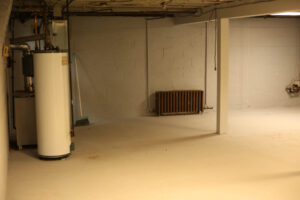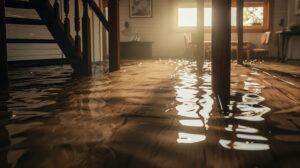
If the floors in your home are sloping or are noticeably uneven, if they are buckling, sinking, or angled downward, then it’s very likely that you may have an issue with your foundation.
There are many causes for uneven floors, including excess moisture, soil issues, and a poorly laid foundation. Depending on the quality and stability of your foundation, the problems may have long existed prior to your moving in. Even a new home can fall victim to flooring problems if the foundation is poorly constructed.
What Causes Uneven Floors?
The problem with uneven floors isn’t the actual floor itself. The problem is usually related to the foundation, and it doesn’t necessarily have to be an older foundation, newer ones can also be prone to problems if not poured and set properly.
Uneven floors often develop as the result of the foundation shifting or settling. Issues with soil and water drainage are often a major culprit in these cases, so if you notice cracks in your walls, have problems closing doors and windows and if you can feel the floors bending, then the foundation has been affected by the soil and ground surrounding the home.
Other Major Signs To Look Out For
Extra Moisture
Excessive moisture or any type of water damage can be a nightmare for your foundation. The causes can range from a leaking pipe under your foundation, excess groundwater, or an unseen drainage issue. This extra water, especially if you have a crawl space foundation, can affect your flooring if not addressed, by causing the wooden beams and sub-flooring to warp and bend.
For a slab foundation, leaking pipes or an improperly poured foundation and shifting soil can lead to unseen cracking beneath your floors. If the cause is a leak, it’s much harder to detect as it’s underneath your foundation, so a fair amount of time can transpire before the warning signs are apparent. As the leak progresses, causing much water to be wasted over time, the dampness can damage the concrete and erode the surrounding soil.
Shifting Soil and Drainage
A home foundation is built upon the soil, concrete is then poured over it, and depending on how wet the soil gets over time, it’s likely to expand under those conditions. The same goes for when it’s very dry, which causes the soil to shrink. This difference in climate can affect your foundation and also affect your floors.
What also matters is how tightly compacted the soil is before a foundation is poured. If it’s loose, there’s a greater chance of shifting and uneven floors. So, if you’re building a home and having a slab foundation poured, make sure that the soil underneath is firmly and tightly set, or else you’ll have foundation problems down the road.
A key element to solving this is proper drainage. Be sure that the foundation is graded properly to prevent any sitting water. The ground surrounding your foundation should slope downward from your house, to allow for proper drainage. The more water you have collecting around your foundation, the greater chance of it getting underneath and affecting your floors and cracking.
Faulty Structural Design Can Lead to Foundation Problems
If you’re building a house, it’s best to make sure that you’re using a reputable company to set the foundation, and that they’re using high-quality materials. There are enough horror stories of companies cutting corners to use poor quality materials in setting a foundation, which can lead to major problems over time.
Poor craftsmanship can cause abundant issues, such as cracks, warping, and especially uneven floors. Your home can also experience a lack of stability in its beams and joists. These are usually made out of wood and can, over time if there’s extensive moisture and mold, lead to major cracks in your walls and floors.
The main thing is not to wait. If you have any of these issues, you should reach out to a foundation repair company to get a sense of how extensive the damage is and how to repair it.
Determining If You Have Uneven Floors
There are a few ways to figure out if your floor is uneven. One way is to take small round objects such as marbles or a golf ball and find where the sagging occurs and see if the object rolls, and if it does, take note of how far it goes. There might be some slight sloping, but if it’s extreme where the object travels far, then you may have an underlying issue that needs attention.
You should also do a full visual review of your home. Walk around the house and check for any possible cracks, water leaks as well as potential damage, deterioration, mold, and discoloration. If anything looks uneven on the outside, it may be affecting your home below and above.
If you have a pier and beam foundation with a crawlspace or a home with a basement, take the time to go underneath and check your floor joists. They should be easy to see, and you should be able to notice any signs of damage or warping, as well of the likelihood of any beams pulling away from the structure.



